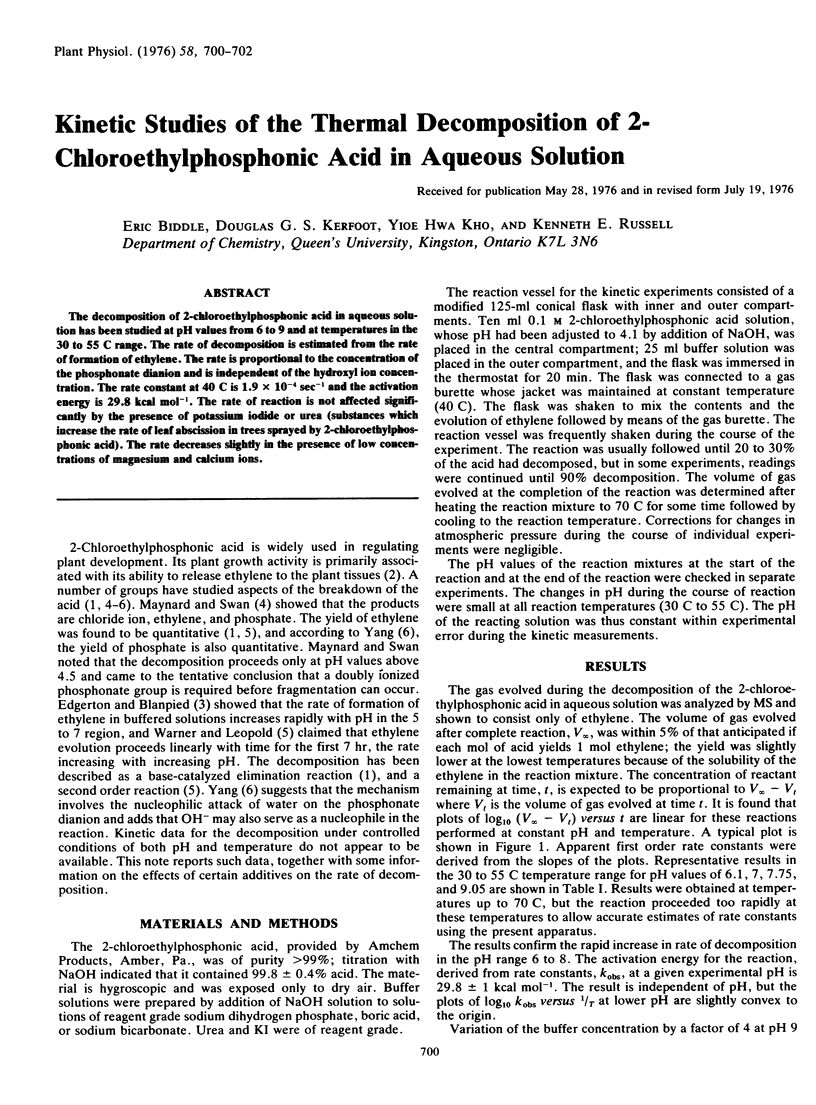Abstract
The decomposition of 2-chloroethylphosphonic acid in aqueous solution has been studied at pH values from 6 to 9 and at temperatures in the 30 to 55 C range. The rate of decomposition is estimated from the rate of formation of ethylene. The rate is proportional to the concentration of the phosphonate dianion and is independent of the hydroxyl ion concentration. The rate constant at 40 C is 1.9 × 10−4 sec−1 and the activation energy is 29.8 kcal mol−1. The rate of reaction is not affected significantly by the presence of potassium iodide or urea (substances which increase the rate of leaf abscission in trees sprayed by 2-chloroethylphosphonic acid). The rate decreases slightly in the presence of low concentrations of magnesium and calcium ions.
Full text
PDF


Selected References
These references are in PubMed. This may not be the complete list of references from this article.
- Cooke A. R., Randall D. I. 2-Haloethanephosphonic acids as ethylene releasing agents for the induction of flowering in pineapples. Nature. 1968 Jun 8;218(5145):974–975. doi: 10.1038/218974a0. [DOI] [PubMed] [Google Scholar]
- Edgerton L. J., Blanpied G. D. Regulation of growth and fruit maturation with 2-chloroethanephosphonic acid. Nature. 1968 Sep 7;219(5158):1064–1065. doi: 10.1038/2191064a0. [DOI] [PubMed] [Google Scholar]
- Warner H. L., Leopold A. C. Ethylene evolution from 2-chloroethylphosphonic Acid. Plant Physiol. 1969 Jan;44(1):156–158. doi: 10.1104/pp.44.1.156. [DOI] [PMC free article] [PubMed] [Google Scholar]


